In our quest to find gems of game design wisdom in the vast mines of MAME, we've turned to the genre of wacky sports. There are a lot of sports games on MAME and we've played an embarrassing number of them. Most of them fall into the sim category, and most of them just aren't that interesting. The old sports sims aren't as realistic as modern sims, and their gameplay isn't as good as old titles from other genres. Furthermore, we don't play or watch any sports. In fact, even the rules are often a mystery to us.
Luckily, there's a genre for the people who don't know all the rules for managing a baseball goal or scoring a football point. That genre is wacky sports. As Mario Kart is to racing, these games are to the traditional ball sports. They are a fantastic example of how to take an established design and give it new life and broader appeal.
Before we go further, what's good about sports? They're one of the basic forms of play. They're an opportunity to play with other people, both competitively and cooperatively. In modern society, a tremendous number of rules, traditions, and a huge quantity of pomp and circumstance go with most professional sports. But at their core, it's about two sides competing for some goal.
The sim market for sports games is huge and successful. Madden is the prime example, but the inclusion of rules, rosters, and stats excludes a lot of people, including all the nerds reading and writing this article.
With that - on to our first game, Power Spikes 2.
Wacky sports games change the setting of traditional sports for broader appeal, but it's not just a matter of taking a sim and reskinning it. Power Spikes 2 (1994 Video System Co.) is a perfect example of the failure of the reskin approach. It only changes the graphics, and the result is less than compelling.
A brief history lesson: Power Spikes (1991 Video System Co.) the original was a mediocre volley ball game without any real distinguishing characteristics or fun gameplay. Power Spikes 2 is exactly the same game with slightly tweaked controls and some optional flashy powered armor graphics. When we say optional, we mean there's a mode where you can play volleyball sans robot armor, and it's the same gameplay.
Power Spikes 2 does have a few things going for it. It has head to head multiplayer, which immediately adds a lot of potential fun. It has some stylin' future arenas to battle in. And no matter how pathetically the other team fails to make a point, your team always celebrates with a dance sequence. Even if you miss the serve and the ball falls straight to the ground, your opponent's team will celebrate with the same glee that they would give if they had made a well-timed spike.
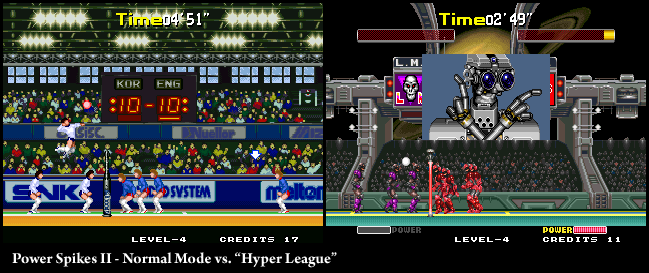
Figure 3 - Failure to innovate.
Unfortunately, even these elements can't make up for the mediocrity that thoroughly pervades this game. The ball moves like it's filled with helium. Your gameplay options are very limited, distilled down to picking one of perhaps three maneuvers. And despite the fact that you can outfit your team in robotic future suits, they move the same speed, jump the same height, and do the same moves. Apparently, the armor is so heavy that jet thrusters are required to jump a normal height. What benefit does the armor provide? Is small arms fire a danger in the future sports arena?
Although Power Spikes 2 was disappointing, we ran across many more wacky sports games that were fun.
The first of these is Super Baseball 2020 (1991 SNK/Pallas, review here). Although SB2020 is, superficially, a reskinned baseball game, in contrast to Power Spikes 2 the developers run with the futuristic theme. Additionally, the basic game behind the theme is well done. Gameplay is straight up traditional baseball. You pitch, bat, toss the ball around, make runs, and so forth. But they add a few extra elements. First, if you hit someone with a pitch enough times, they're teleported away by a flying ambulance and replaced by a robot. You can do this an unlimited number of times, until the entire opposing team is made up of robot replacements.
Second, they modify the field slightly. Without going into too much detail, the home run zone is smaller, and most of the crowd is covered by glass so that a ball that would normally go over the wall rolls back into play. This works very well because you're still rewarded for hitting the ball further (in that you get more time to run until the ball rolls back into play), while home runs are even more rewarding because they're a bit more rare. These changes are subtle and well balanced.
Finally, as the game progresses, they add futuristic "crackers" to the field. "Crackers" would be known in our "modern" society as antipersonnel mines. What game wouldn't be better with arbitrary explosives? This element adds a lot of chaos and fun to fielding - in addition to running from point A to point B, you have to dodge bombs.
Punk Shot (1990 Konami) takes the notion of wacky sports a little further. It is a basketball game, insofar as there are two hoops and you have to put the ball in one of them. From there, things get extreme, dude. For instance, there's no steal button. Instead, you have the option to punch, tackle, or pile drive your opponent. And what game wouldn't be better with arbitrary pile driving?
Each period takes place in a different level that has a unique set of NPCs and obstacles to keep things interesting. The obstacles are matched to the theme of the level; not only are there holes in the ground, crates overhead threatening to drop on you, and birds blocking the hoop, but you also risk catching fire and falling into the ocean!
Punk Shot is at its during best multiplayer matches. We played it co-op against the AI, and mainly got our asses handed to us. The AI is really cheap, but we were able to come up with some strategies that worked out pretty well - well enough to give us a comfortable victory in at least one period. To avoid having to spend a solid week "researching" this article, we ultimately had to cheat our way through the game, and discovered something interesting: there's nothing more to the game after the first match. The winning screen is the same as the losing screen except that the word "WINNER" is next to your dudes. No new bad guys or levels at all.
And this reveals the key to the game. Punk Shot is a game of pure competition. There's just one three-part level, but the game remains highly replayable. Why? By finding new (human) opponents and developing new strategies within the already-familiar framework of the game . This concept plays out in all multiplayer games to one degree or another. Having a regulation-size field or a standard multiplayer map like de_dust keeps the focus on the gameplay, not on the content. With a fixed, unchanging world, everyone's attention is on the strategy and the interaction between players.
Pig Skin 621 AD (1990 Midway) is a great game by Konami competitor Midway, and the wackiest of the games we've discussed so far. The "Pig Skin" in the title is there to communicate that you will be carrying a football-like object towards an end zone. The game is strictly competitive, with just two levels: a grassy playing field and an in-door arena littered with medieval crap, one for each half. Within these arenas, two teams of burly men fight to score the most points.
The basic controls are very much like your run of the mill football game - you can pass, tackle, or change plays. Punching is another, non-standard option. But the contents of the game world are really what make this game stand out. Every level is full of obstacles that will get in the way of making a goal by making you trip, slip, or generally lose control of the ball. This adds a bit more complexity - which is good because, let's face it, a football field is boring! It's literally just a field with lines on it! Add some stumps and mud puddles and trap doors and statues of chicks and you really have something.
The obstacles add interest because they affect both teams equally. Planning your route to the goal is vital to success. They also make it easier to catch someone who has broken away, because there are good odds that that person will run into something before they make the goal. This maintains hope for the loser, keeping the game fun for everyone.
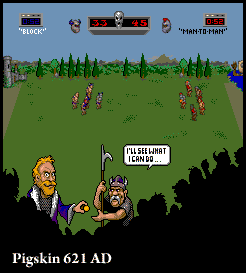
This is taken further with the NPCs that are brought out over the course of the game. If one side falls behind, they're given an additional teammate to keep things competitive. The first helper is a guy with a halberd who's not that much help. He's just an extra obstacle that favors one team. But the next team to fall behind gets to "SEND IN THE TROLL!" Trolls are awesome - big, fast and green. The crowd cheers for them, and so did we. As the balance of points favors one team or another, more trolls are dispensed to keep competition fierce throughout each match.
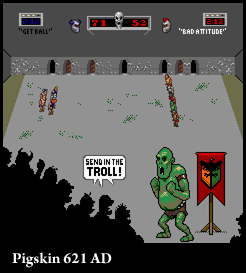
These two factors - the obstacles and the NPCs - work very well. They fit the theme of the game, and provide crucial balancing forces. For a multiplayer game, the risk is that one guy is going to be massively better than the other and as a result the game won't be fun for either player. At a certain point it stops being fun to beat on newbies. Bringing out the troll is a hilarious and effective way to bring balance to the game.
This is a technique that's seen play in other games, most notably a certain racing game. Mario Kart applies a similar technique, in the form of the blue shell. To a lesser extent, the weighted items distribution - where players in the back of the pack get better stuff than the guys in first - works the same way. It can be cheap, but it keeps the pack tight and the game fun.
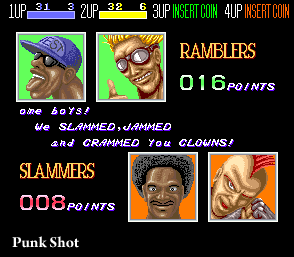
Computer games have complete freedom to do anything you, the developer, can implement. Many things that are impossible in real life become easy, and things that are easy in real life become very difficult indeed.
Sports are especially well suited for this because they're a frame of reference everyone on your continent is familiar with. It's like a starter set for your game design. But while replicating a real life sport exactly has some plusses, we think better and more accessible games are to be had using a sport as a jumping off point and going in a unique, digital-only direction with it. Once you stop trying to make a sim, you can start addressing the gameplay problems that lead to a negative player experience. For instance, because players can't die in the game, a lot of rules dedicated to keeping players safe can be discarded.
Keep these points in mind if you decide to enter the wonderful world of wacky sports:
- Wackiness can't just be a veneer. Power Spikes 2 shows us that if you're going to put your volleyball players in mechs, there had better be a big shift in gameplay. Players want a believable world.
- You have to run with your theme. Believability means that if everyone is running around in tanks (or power armor), the stakes had better be a lot higher than they when both teams are in short shorts.
- Stick with a framework people know. Punk Shot is a great game, but it wouldn't be nearly as appealing if it weren't based on basketball. Because we already know the basics of the sport, the designer could add a lot of additional complexity without overwhelming anyone.
- Multiplayer games need good gameplay, not lots of content. Look at Team Fortress 2. Look at Counter Strike. Look at Super Baseball or Punk Shot or Pig Skin 621 AD. All are fun. (OK, maybe TF2 is a little better than decade old arcade games. ;) None of them have more than five levels that people frequently play. Get some content, make sure it's good, then refine the heck out of your gameplay.
- Keep hope alive. Setbacks should be temporary. One player should never be able to put another player in a situation where they're screwed, but have to keep playing. Ever been juggled for five minutes by an expert Tekken player? That's what I'm talking about.
- Balancing forces can be good. Trolls, blue shells, and obstacles all serve to minimize the difference between the best and the worst players. If you're looking for dominance, this can be frustrating. But if you want a fun game - keeping victory challenging for everyone, and within reach for everyone, is a good idea.
Well, that's all we've got. We hope you find this useful! And remember to check out our last article on learning from MAME games if you want dig up your own game design gems.
Ben Garney and Eric Hartman are both unemployed. Ben Garney (coderhump.com) spent the last five years at GarageGames working as the Torque Technologies Director. Eric Hartman (badspot.us) develops Blockland in his spare time, which is copious.



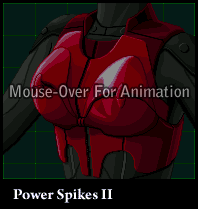
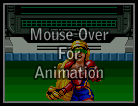
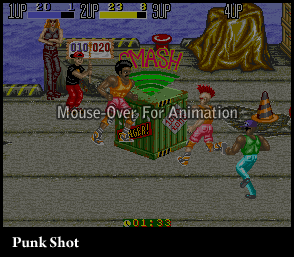
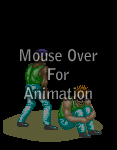
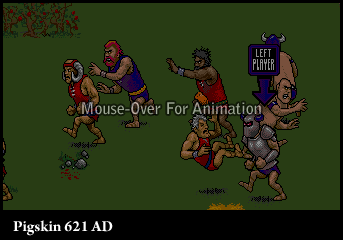


I love football, but after I started betting on sports, I discovered many other sports that turned out to be no less interesting than football. By the way, sports betting is a great way to make money online. If you want to give it a try, I recommend clicking this link https://takebet.co.rw/betting-tips/correct-score. These betting tips make sports betting easier.